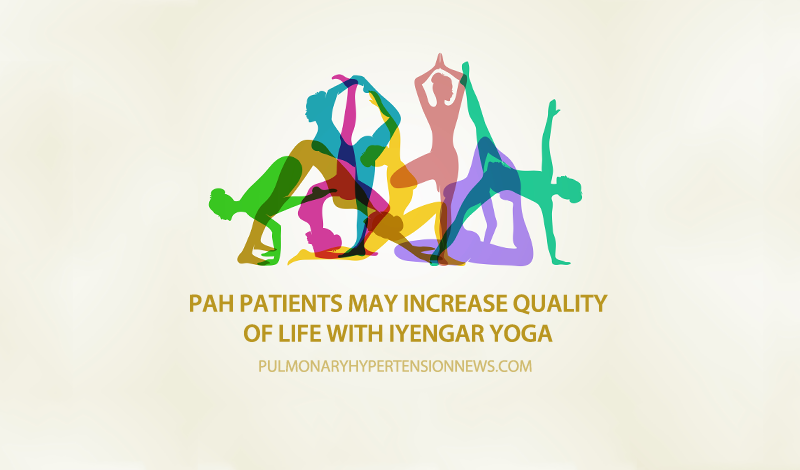PAH Patients May Increase Quality of Life with Iyengar Yoga

Iyengar Yoga (IY) may be able to increase the quality of life in patients who suffer from pulmonary arterial hypertension (PAH). This conclusion is from a research team at the universities of Calgary and Alberta in Canada, and was recently presented at the 36th Annual International Society for Heart and Lung Transplantation (ISHLT) Meeting & Scientific Sessions.
Investigators from the Canadian universities tested the effects of Iyengar Yoga on patients at different stages of PAH to evaluate the benefits of two-hour sessions of the exercise.
Find out who is more at risk of developing pulmonary hypertension in this article.
Iyengar Yoga is a type of yoga that is tailored for each individual’s needs. Volunteers in the study underwent yoga classes over the course of 12 weeks. The investigation was focused on the effects of yoga on improvements in the quality of life of PAH patients, especially anxiety and depression.
“This study provides evidence that alternative therapies such as Iyengar Yoga may be effective in improving the quality of life for a patient suffering from PAH,” said Andrew Fisher, FRCP, Ph.D., 2016 ISHLT meeting and scientific session program chair, in a press release. “A highlight in the findings is that this therapy did not result in adverse side effects to the patient, which is promising as a supportive approach for PAH patients.”
The research included 48 volunteers who were diagnosed with PAH at different levels. Their health was evaluated based on the Hospital Anxiety and Depression Scale (HADS), Chronic Respiratory Questionnaire (CRQ), and a 6-minute walk test. The study revealed that Iyengar Yoga is able to decrease levels of anxiety and depression without side effects. The HADS-anxiety score decreased by 2.25 from the baseline of 6.97 and HADS-depression decreased by 2.78 from the baseline score of 7.81.
Investigators believe this will encourage the adoption of this alternative therapy into the management of PAH patients as well as patients with other chronic lung conditions.
Find out more about invisible illnesses and pulmonary hypertension.
Iyengar Yoga is an original type of yoga created by the Indian guru B.K.S. Iyengar, who is also credited for bringing yoga to the western world. Iyengar Yoga is characterized by the use of props during the sessions, as well as by the importance of alignment.
“Yoga is for everyone. No one is too old or too stiff, too fat or thin or tired. A certified Iyengar Yoga teacher can guide students of all ages and physical conditions to an experience of yoga which is safe, accessible, and rewarding,” according to the Iyengar Yoga National Association of the United States.
“Iyengar Yoga teachers modify the classic asanas (yoga postures) for individual students with the use of props — such as blocks, blankets and belts. Props allow for a deeper penetration into the posture, as well as a longer stay,” the association added.
But how is pulmonary hypertension diagnosed? Learn more about it here.
Pulmonary Hypertension News is strictly a news and information website about the disease. It does not provide medical advice, diagnosis, or treatment. This content is not intended to be a substitute for professional medical advice, diagnosis, or treatment. Always seek the advice of your physician or other qualified health provider with any questions you may have regarding a medical condition. Never disregard professional medical advice or delay in seeking it because of something you have read on this website.







